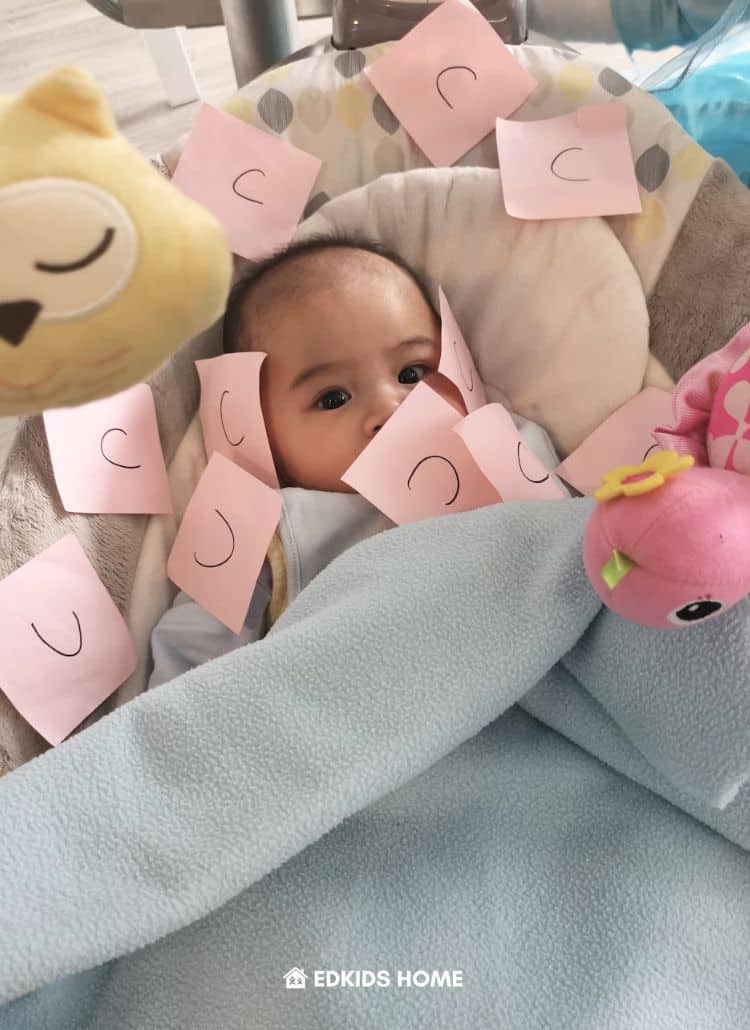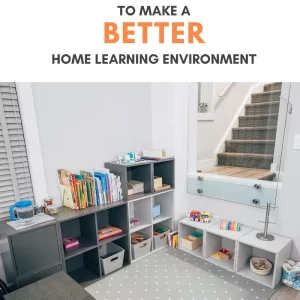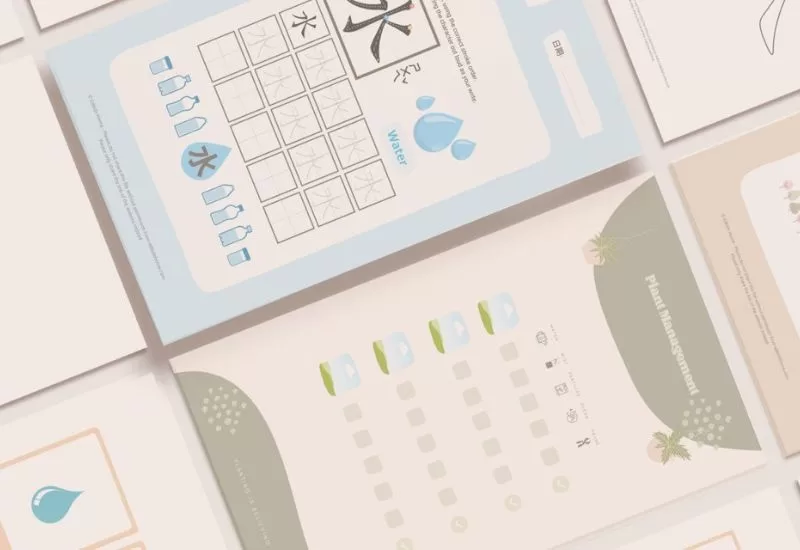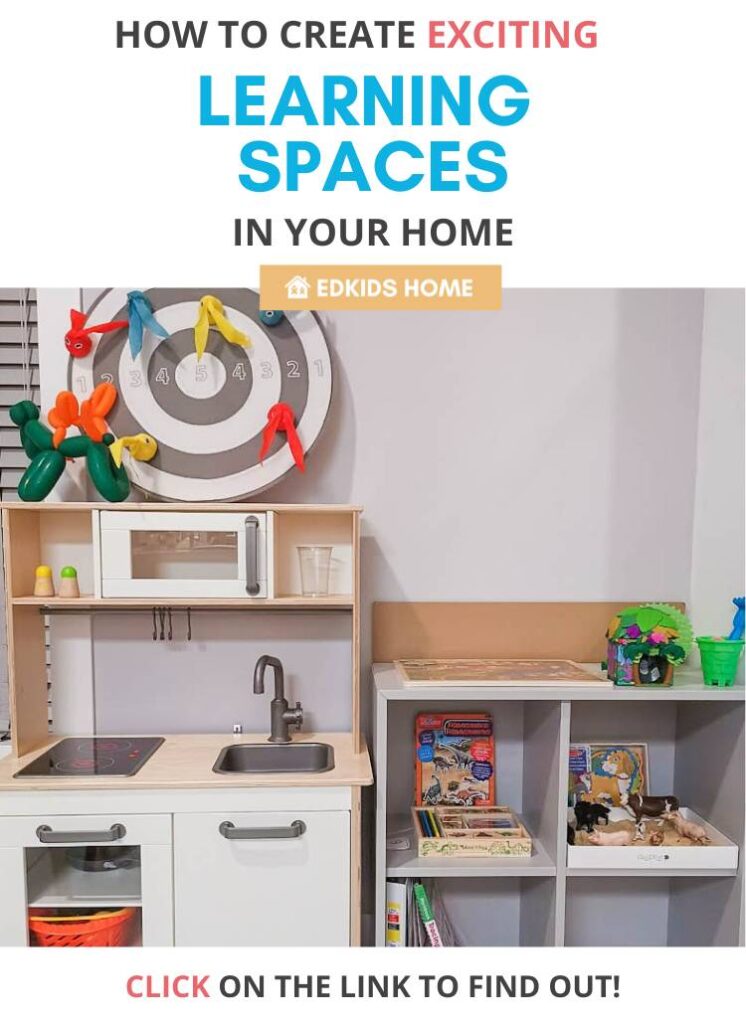
As parents, it is important to create a learning space for our children. After all, the earlier they start learning, the better. However, creating an effective and stimulating environment can be challenging when you are first settling into a new home. That's why it helps to find creative ways to set up learning spaces without having to break your budget or rush into buying expensive materials right away.
Through our own experience of moving homes with our daughter, we have discovered some simple yet useful methods that will help you get started on setting up a great learning space for your child without breaking the bank

When we first moved to our new home, setting up learning spaces was not our priority. There were too many chores, such as cleaning, unpacking, and decorating. Despite that, we were able to find ways for our daughter to learn and interact with us. We gave her some wooden crates and she used them for stacking, counting, hiding, etc. Hence, setting up learning spaces does not have to be immediate, you can slowly build as time progresses.
Related: 16 Ways to Make a Better Home Learning Environment
You cannot make people learn. You can only provide the right conditions for learning to happen.
Vince Gowmon
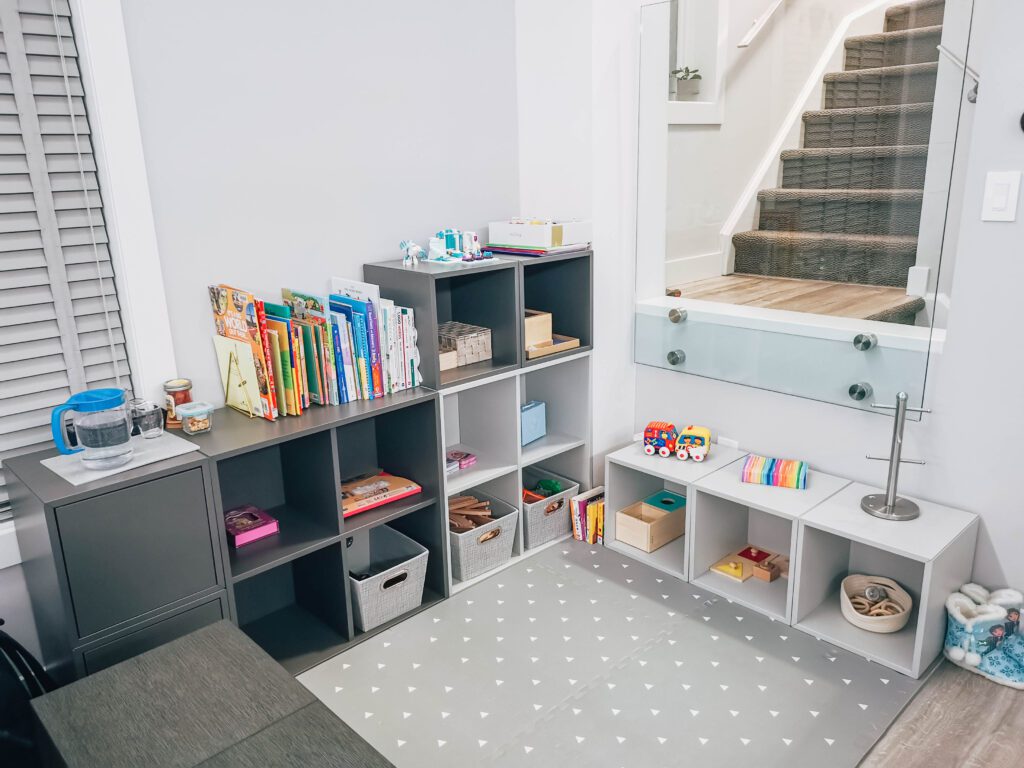
What Are Learning Spaces?
Learning spaces are areas in your home designated for learning and developing new skills.
They can be as simple as a corner of the living room with a small table and chair or a more elaborate space with different spaces for various activities.
The important thing is that learning spaces are designed to help children focus on their studies and make the most of their time at home.
First, let's take a look at the different categories of learning:
- Physical development involves children learning about and using their bodies. This includes:
- Gross motor skills (using large muscles to run, jump, hop, etc. )
- Fine motor skills (using small muscles to do things like grip a pencil)
- Coordination (being able to use both types of skills together, such as kicking a ball).
- Intellectual development is about children learning to think, understand, and remember things. This happens through exploring, investigating, and trying new things.
- Emotional development is about children learning how to manage their feelings, cope with stress, and relate to others. It's important for children to feel like they can express their emotions in a healthy way.
- Social development is about children learning how to interact with others. This includes things like communication, cooperation, and sharing.
The Importance of Learning Spaces at Home
Given a rich environment, learning becomes like the air. It's in and around us.
Sandra Dodd
Here are some of the importance of learning space at home:
- Keep your children occupied by learning and playing instead of relying on screen time
- Helping your children to become more independent learners. If they know a specific place to learn about a particular topic, they will be more likely to go there on their own and explore that subject in their own time.
- Promote a love for learning in your children. By providing them with different opportunities to learn about various topics, you've helped to instill a lifelong love of learning in them.
- Developing and strengthening different skills such as practical, motor, cognitive, problem-solving, critical thinking, etc.
- Encouraging creativity and imagination
- and much more
Initially, my daughter often felt bored because she had finished playing with all the toys in her playroom.
Screentime (TV or iPad) was an effective tool to solve this problem temporarily, but it also led to many other issues in the long run.
Finally, I learned to develop a better learning environment for my daughter.
I started displaying some toys and activities on shelves with trays and baskets.
Soon, I observed significant improvement in her behaviors by simply changing the setup at home. Her attention span increased, her independence had grown, and was eager to learn and up for more challenges!
After witnessing her growth, I was determined to create an excellent learning environment at home.
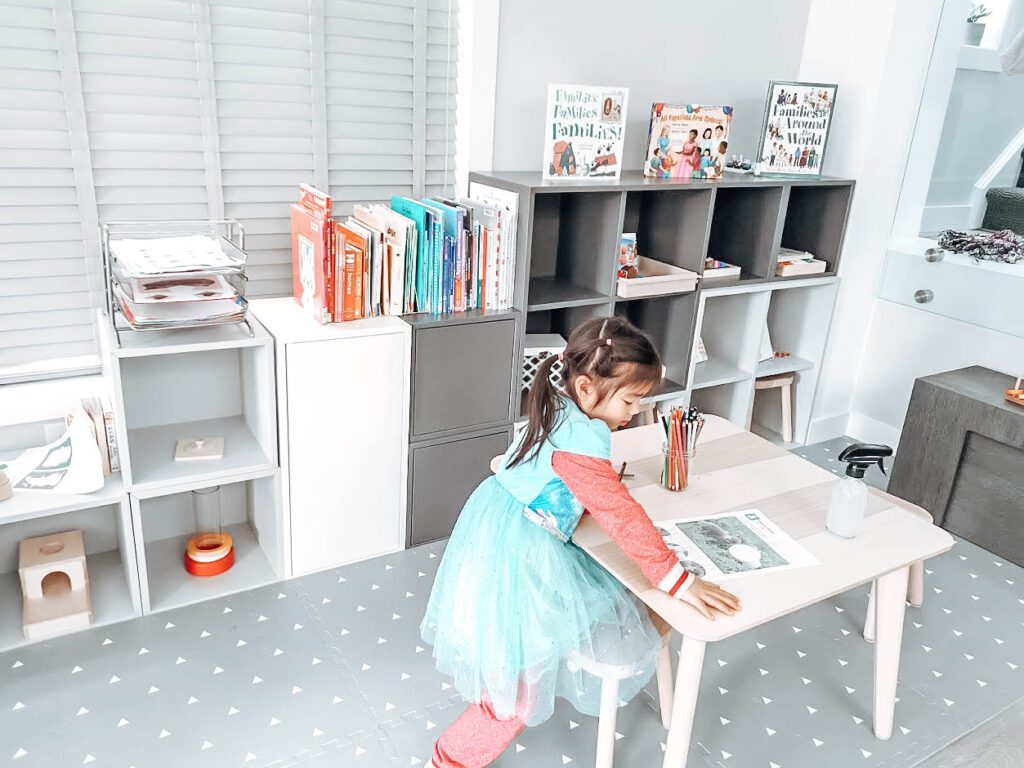
How Do You Set up Learning Spaces?
Now that you know what learning spaces are and why they're essential, let's discuss how to set them up in your home.
First, you will need to divide your home and designate different areas as learning spaces. Once you have selected the areas, you must gather the appropriate materials for the learning spaces.
Have a Clearly Defined Area for Each Subject
This will help your children to focus on one task at a time and avoid distractions. Having all the materials you need in each learning space is also important so your children can work independently.
Here are some different learning spaces you can set up at home:
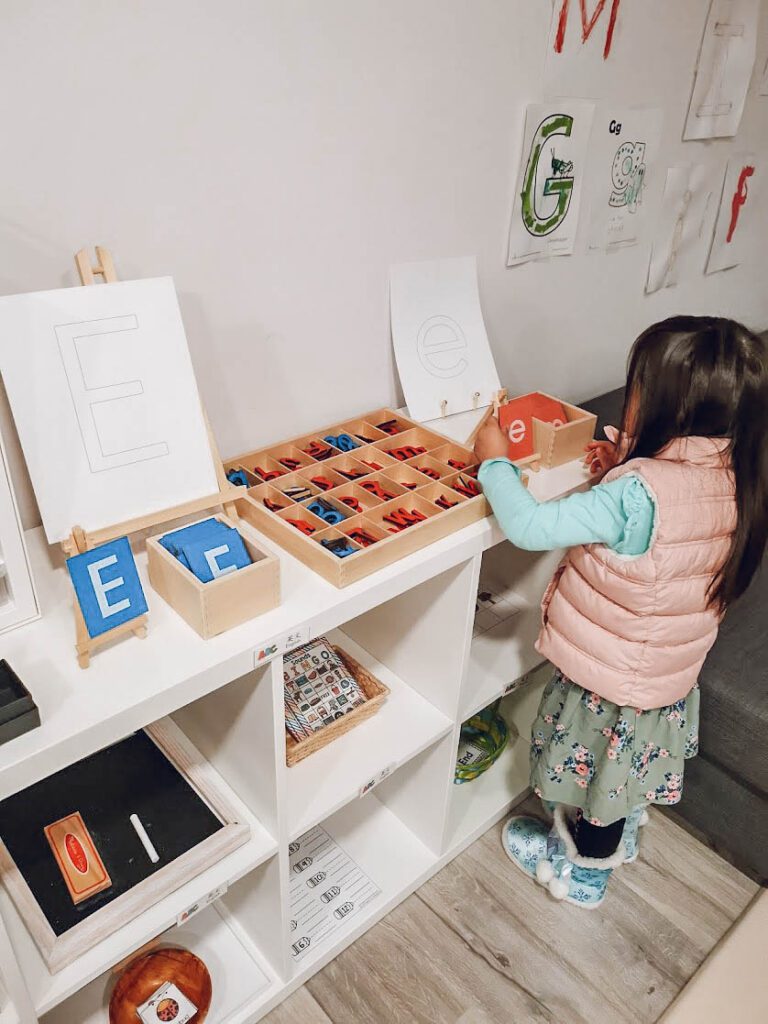
Literacy
You can have a small table and chair for your children to use with a few items like a pencil holder, paper, crayons, etc. Place some children's books on shelves to the mix, and you're good to go!

Arts & Crafts
Setting up an arts and craft cart is a great way to encourage your children to be creative! An arts and craft cart can be anything from a small shelf with art supplies to a large rolling cart with everything they need for their next project. Arts and crafts carts are also a great way to organize your children's learning area. When setting up the space, ensure there is plenty of counter space or table space for your children to work on their projects.
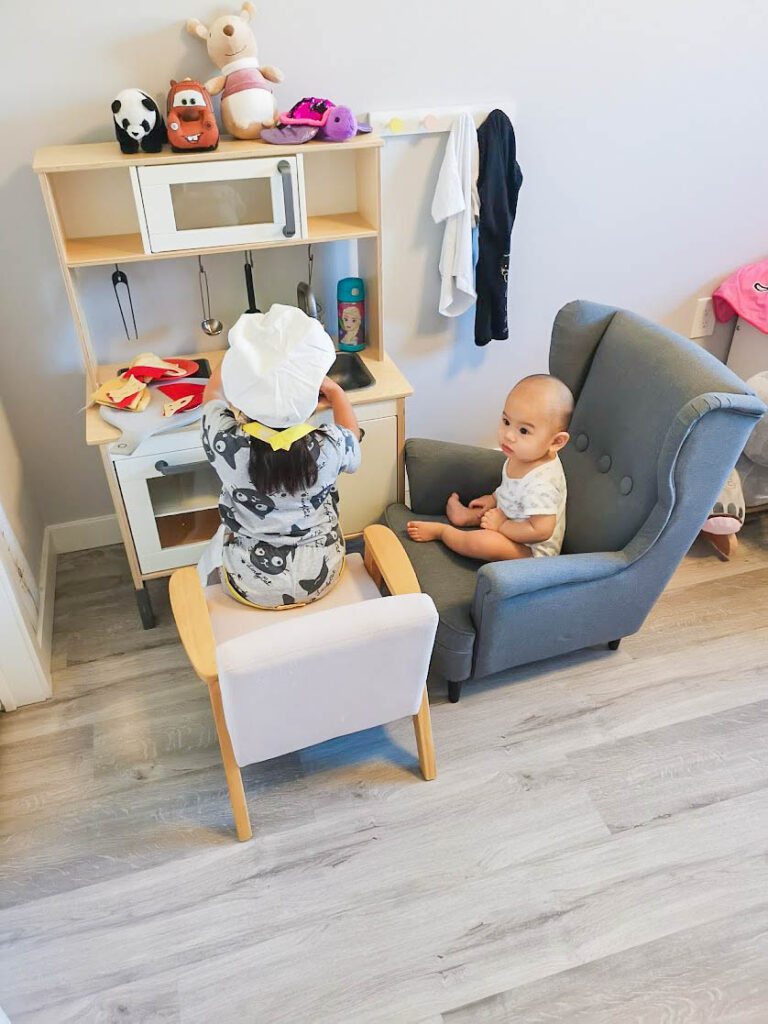
Pretend Play
Through pretend play, children learn to do things like solve problems, express emotions, and understand different points of view. You can include things like dress-up clothes, puppets, and toy kitchens. It's an excellent way for children to use their imaginations and explore different roles.
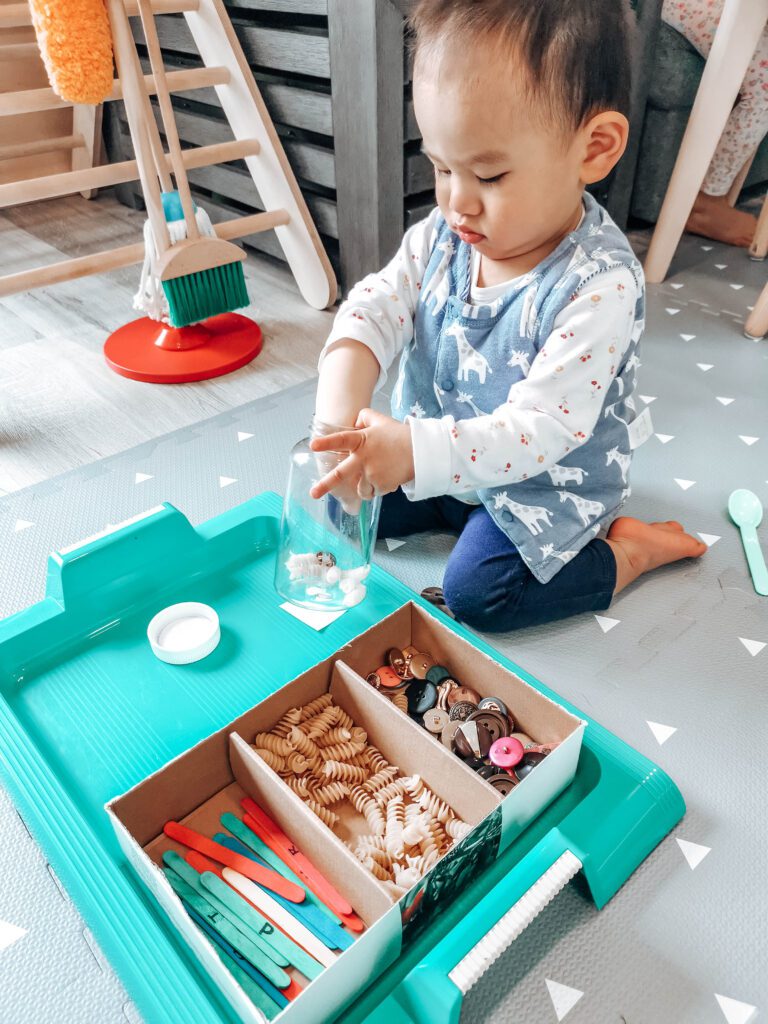
Loose Parts
Another great option for at-home learning spaces is to introduce loose parts. Loose parts are materials that can be moved, manipulated, and combined in endless ways. They can be natural or manmade, providing children with opportunities to create and problem-solve. Some loose parts include beads, buttons, fabric scraps, pipe cleaners, and stones. You can usually find loose parts at your local craft store or online.
Related: 28 Educational Toys That 2 to 3-Year-Olds Will Love

Movement
If you have enough space at home, you can set up equipment such as a Pikler triangle, trampoline, or balance beam. A play area on a soft floor or carpet would be ideal for babies to learn to crawl. If you have a backyard, you can consider having a sandbox, climbing structure, and a slide to enhance gross motor skills.

Math
Little learners need many opportunities to explore and play with math concepts. Providing a math space is a perfect opportunity for your children to do hands-on learning. You can include activities like counting toys, number games, and simple puzzles.
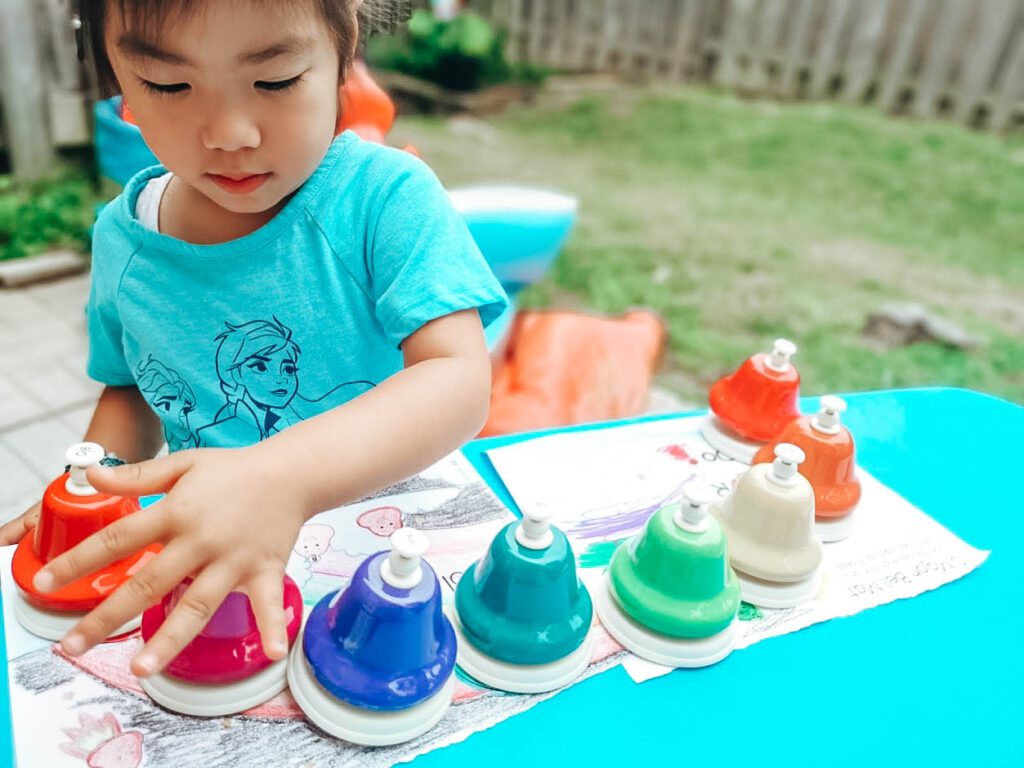
Music
Music enhances creativity in children. Here are some ideas for setting up a music learning space at home:
– Make sure there is enough space for your children to dance
– Have a music player available with varieties of music for your children to learn and enjoy
– Have instruments available for children to play
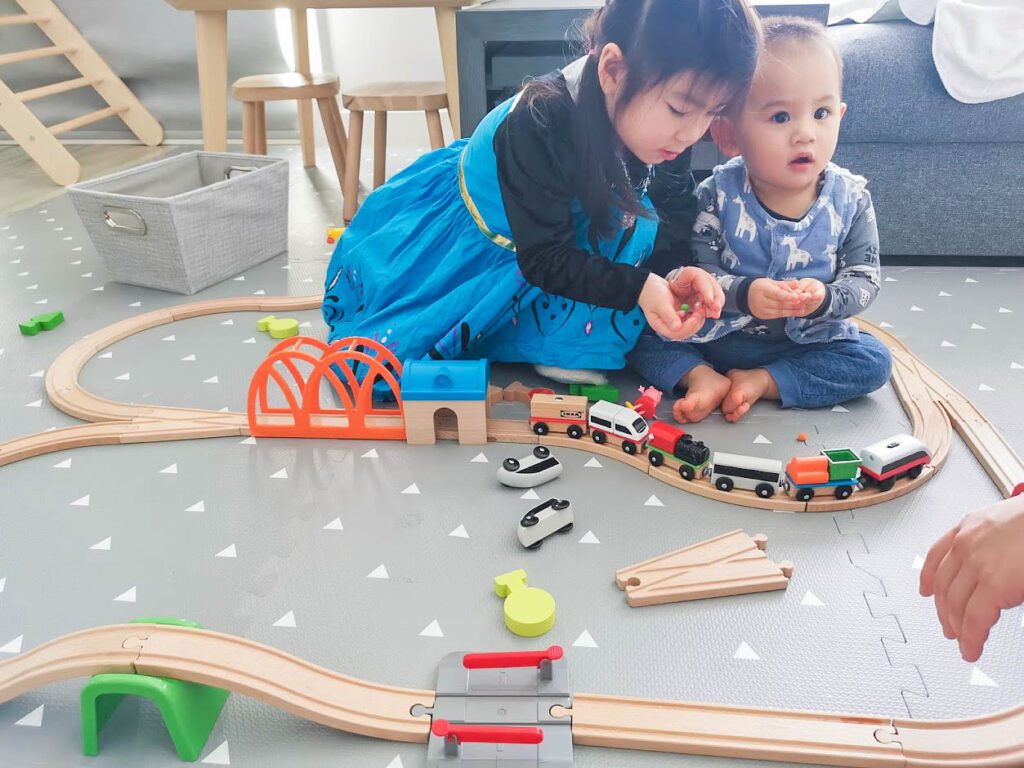
Construction
Construction learning areas help children to understand the world around them. This also allows children to be creative and use their imagination. Lastly, they help children to develop fine motor skills. All of these benefits are important for children's development.

Sensory
One space often overlooked, but can be highly beneficial for children, is the sensory area. This can be an area of the room where they can explore different textures, sounds, and smells. For example, you might include a variety of soft fabrics for them to touch, along with containers filled with rice, beans, and water that make interesting noises when shaken.
Another way is to have a giant bin or tub where you can use different tools to interact with sensory materials such as play dough, sand, water beads, etc. These spaces help children learn about their senses and the world around them in a safe and controlled environment.
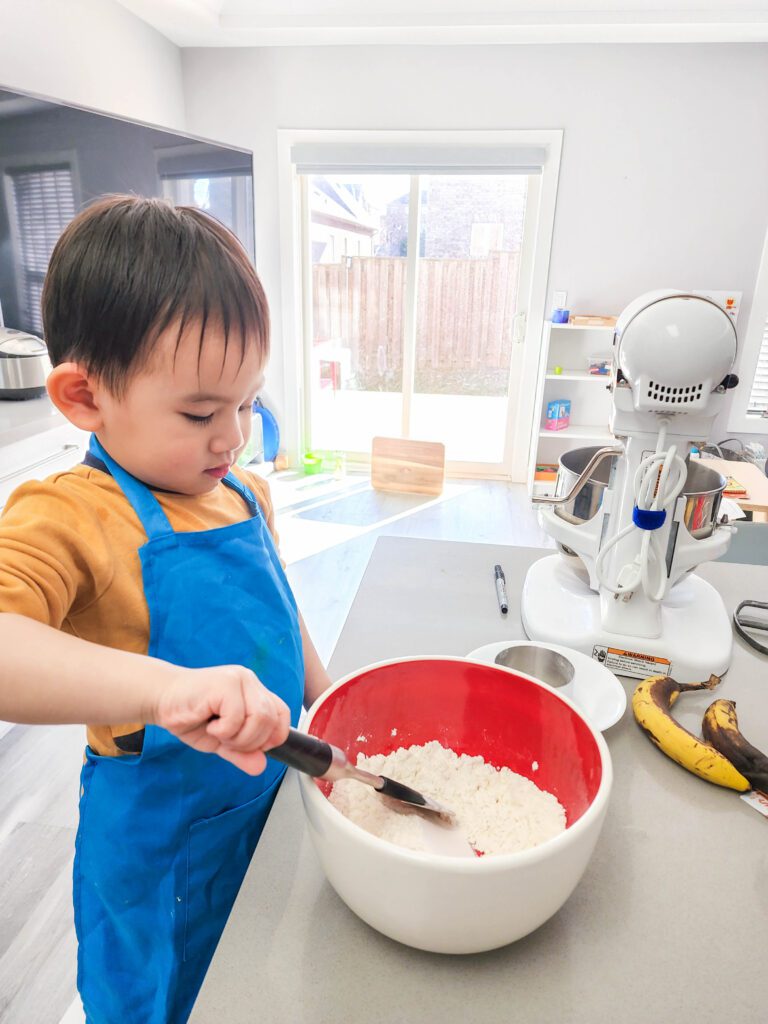
Cooking & Baking
Children love helping out in the kitchen! A cooking and baking space is a great way to teach your children about healthy eating and measuring ingredients. Plus, it's a fun activity that the whole family can enjoy together.
I reserved a kitchen drawer for my children. The drawer includes measuring cups, utensils, cutting boards, cloths, placemats, and aprons. I have also dedicated a small area in the fridge for my children to store snacks and ingredients so they can make snacks or meals when hungry.

Science
This could be set up in a spare room or basement with a small desk and chair. Include plenty of science books, materials, and experiments in this area

Practical Life
This helps children learn day-to-day practical life activities such as cleaning, folding, pouring exercises, etc.
Use Shelves, Baskets, and Trays to Display Activities and/or Toys

Right: educational activities with trays
Using shelves to display activities and toys is inspired by the Montessori approach.
I love this idea because it looks beautiful and tidy, but the best part is that my kids can see all their options at a glance and choose what they want to do.
Having the activity trays and baskets set on a shelf within reach for my children means they can select the activity they want to do without asking me.
Trays and baskets also keep all necessary items together.
Put away each toy/activity when done
Always encourage your children to return each activity/toy to its place on the shelf after they are done using it. Once it becomes a routine, they will tidy up without you telling them, which is a game-changer for me.
Setting up Learning Spaces by Age
It is essential to consider their age for setting up learning spaces at home.

For babies (3-12 months), set up an area with a mat on the floor. Put a few board books on the lower shelves within arm's reach. As they grow and become more mobile, you can put some favorite toys on the lower shelves to encourage standing up and reaching.
You can start setting up a shelf for toddlers (12-18 months) who can walk. You may begin using baskets to organize toys on the lower shelves.
For older toddlers (18 months -3 years old), You can start using trays and bins to organize materials. You might want to put puzzles, art supplies, and other manipulatives on the lower shelves.
And for preschoolers and older children (3+ years old), you can put books, games, and activities on the higher shelves.
This will ensure that your children can safely access the materials they need and that they are developmentally appropriate for their age.
Tailoring Your Children's Individual Needs and Interests
You can ask your children what they want to learn or look for clues in their play.
Once you recognize your children's interests, you can start setting the learning areas.
If you have children who love to build, you might create a space with blocks and other construction toys.
For children who love art, you might set up a painting space with an easel and different types of paint.
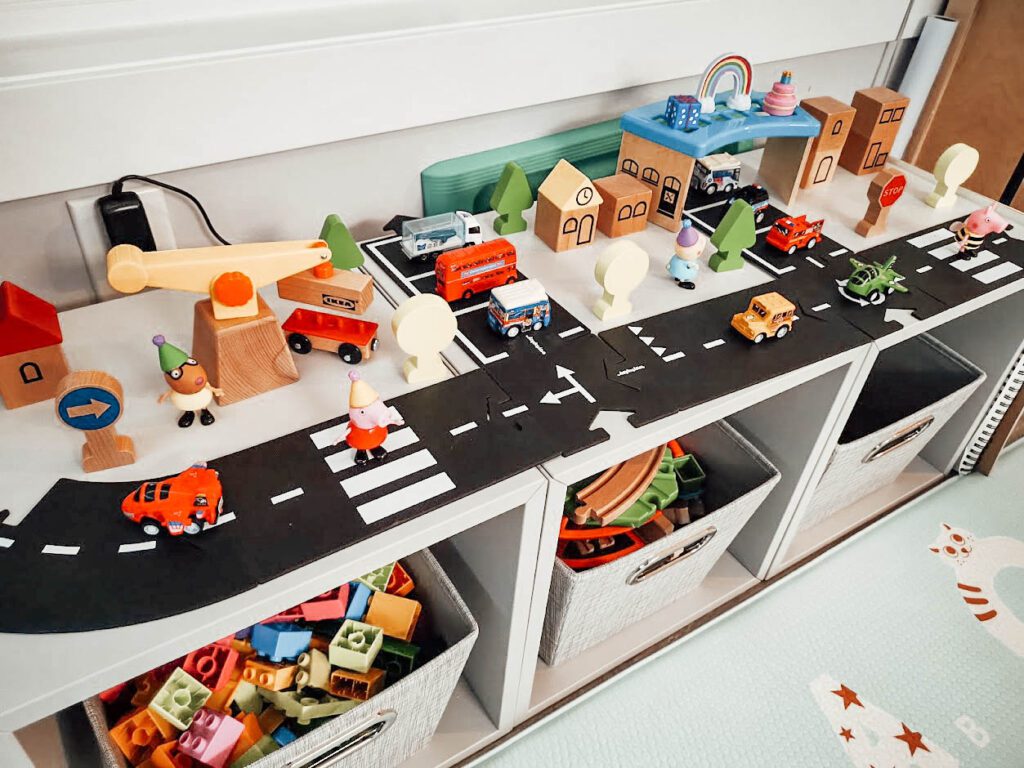
My son was obsessed with vehicles such as trains, cars, and trucks. Therefore, I set up a theme related to cars which sparked his interest in learning. My daughter loved unicorns and rainbows, so I set up a topic to her liking and used her toys as learning props.
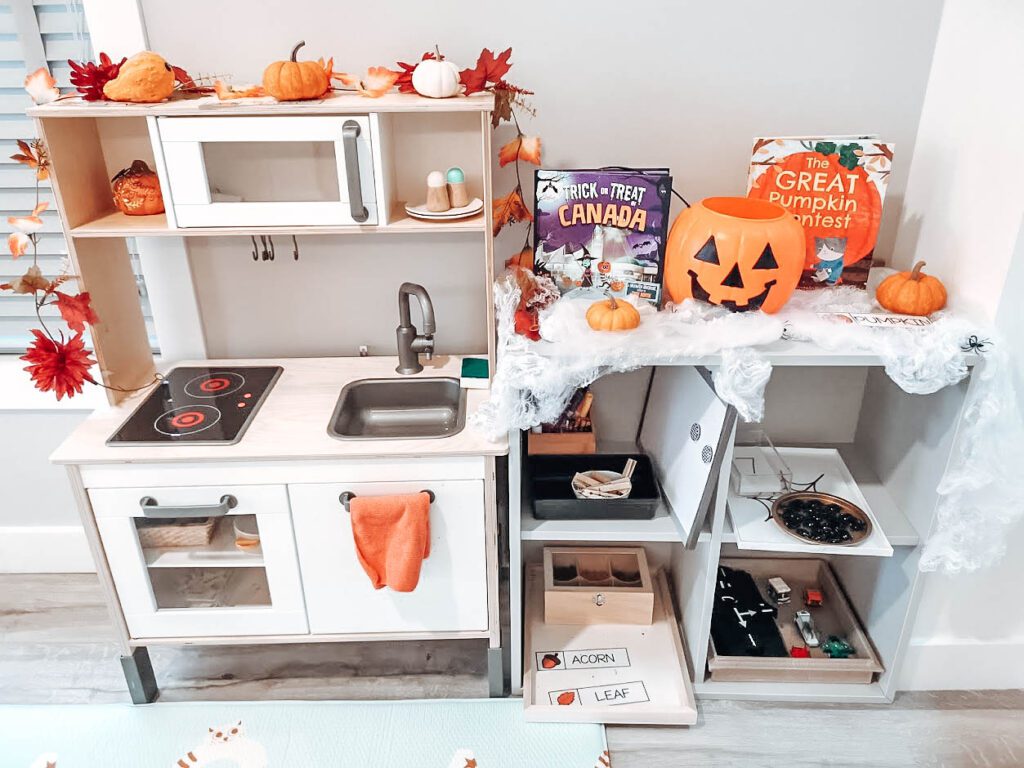
Tips for Setting up Learning Spaces:
- Choose an area that is comfortable and conducive to learning. This might be a quiet hub of your house or even a spot in your backyard.
- Find furniture that your children can manage without help. For example, children's size tables and chairs, learning towers, stools, etc.
- Set up the learning spaces in areas with good lighting
- Display only a few activities for each learning space which can help your children's concentration, and they won't feel overwhelmed.
- Encourage your children to try new things and explore different learning spaces. This is an excellent way to learn about new interests and develop their skills.
- Be flexible with your learning spaces. As your children grow, their interests will change, and you might need to adjust the learning spaces accordingly.
- Rotate toys/activities regularly. It helps declutter the house, and children can still enjoy their favorite activities.
Frequently Asked Questions

The Last Thing You Need to Know About Learning Spaces at Home
One of the benefits of having children is that they force you to keep learning.
You learn about new things, whether how to make a perfect PB&J or what the Itsy Bitsy Spider is really up to.
But as any parent knows, children also come with many challenges – one of which is finding ways to keep them occupied and engaged.
One solution is to set up learning spaces around your home. This way, no matter where your children are, they can always find something stimulating and educational to do.
Plus, it's a great way to sneak in some learning when they're supposed to be playing!
The four categories of learning are:
- Physical development
- Intellectual development
- Emotional development
- Social development
Here are some of the learning spaces you can start setting your own at home:
- Literacy
- Arts & crafts
- Pretend play
- Loose parts
- Movement
- Math
- Music
- Construction
- Sensory
- Cooking & Baking
- Science
- Practical Life
By taking the time to set up learning spaces that are tailored to your children's needs, you can create a space that is both fun and educational for them! Just make sure they are age-appropriate for your children. So what are you waiting for? Get started today!
Do you have a learning space set up at home? Let us know in the comments below! Thanks for reading!

